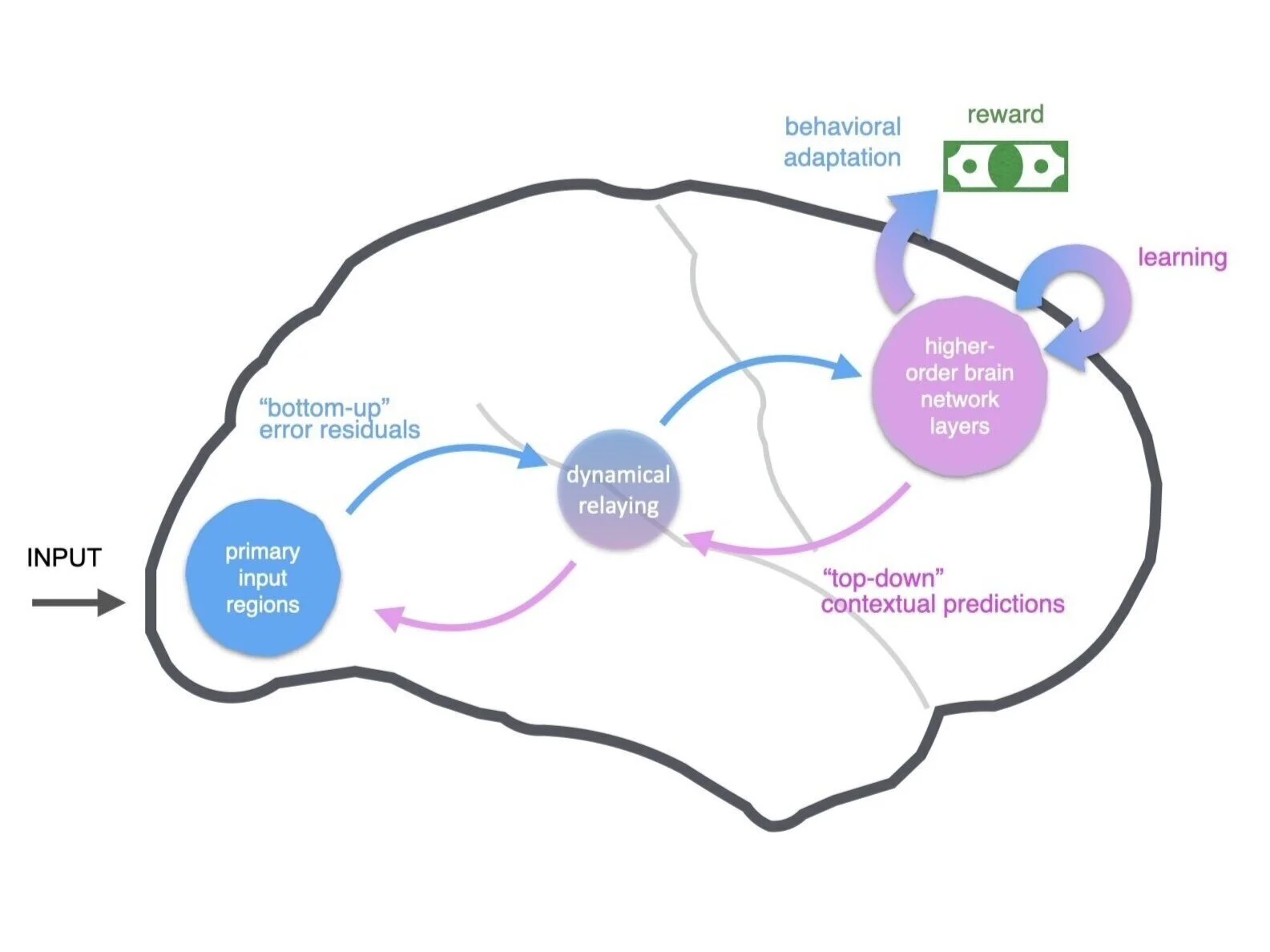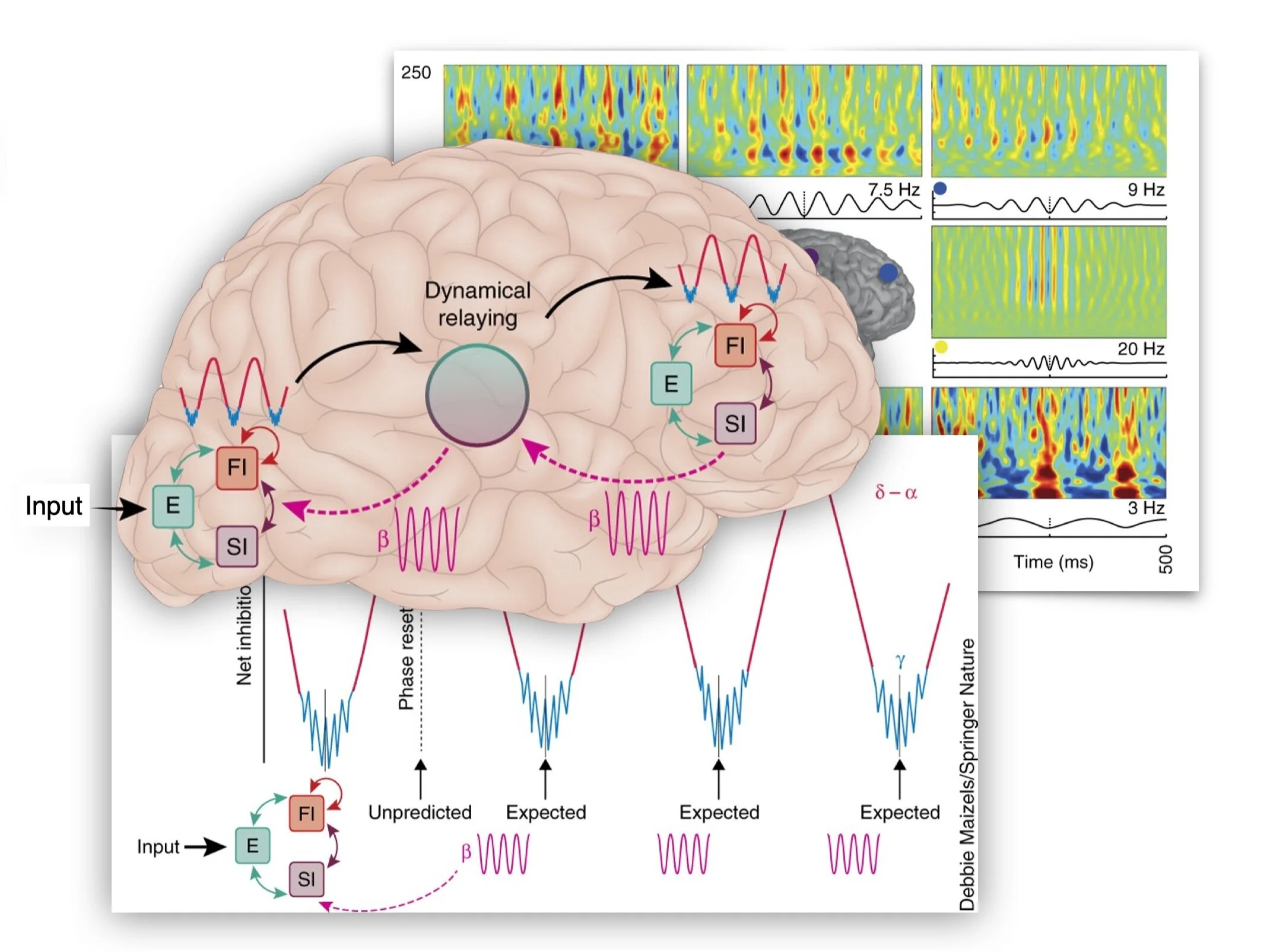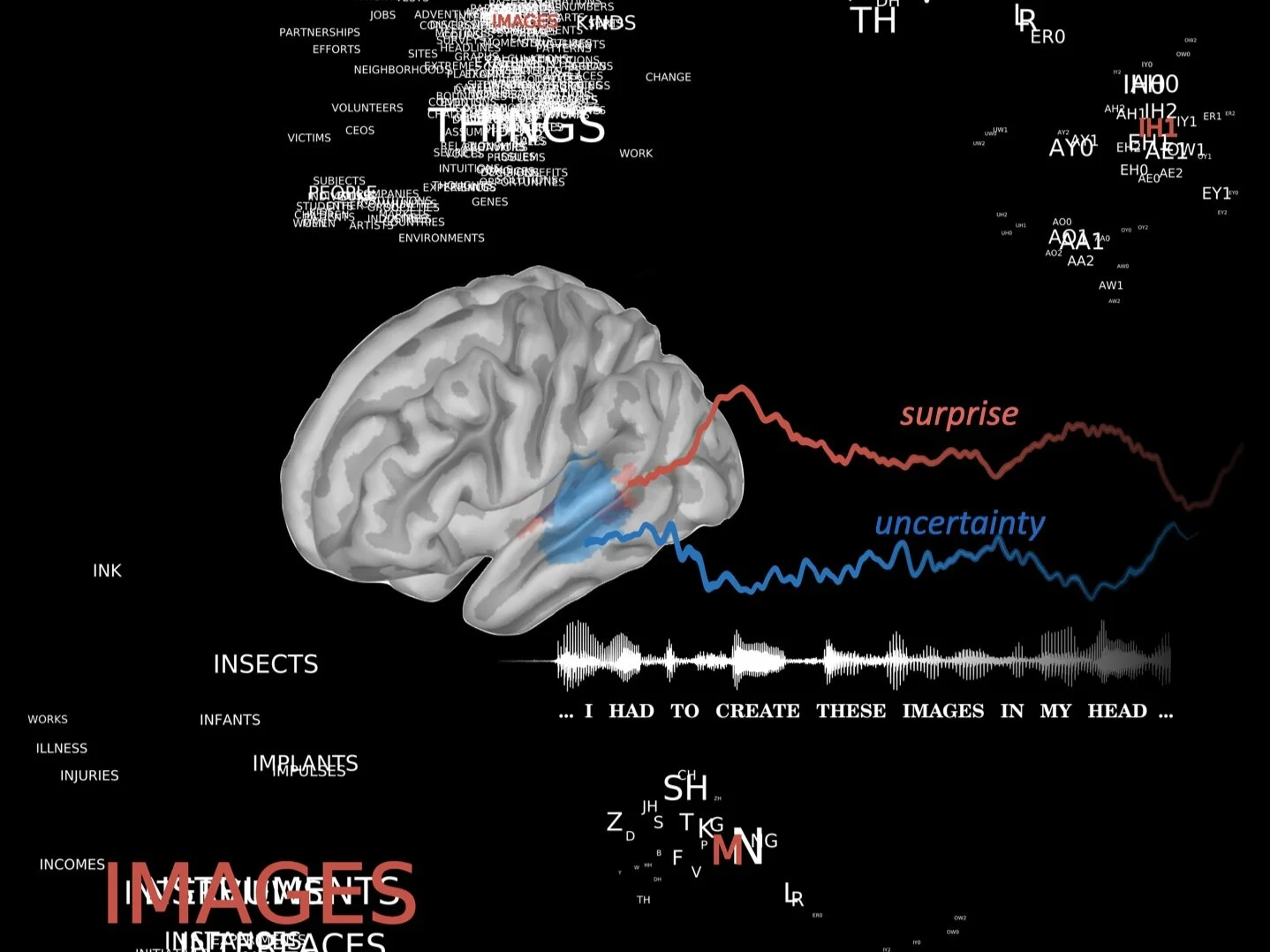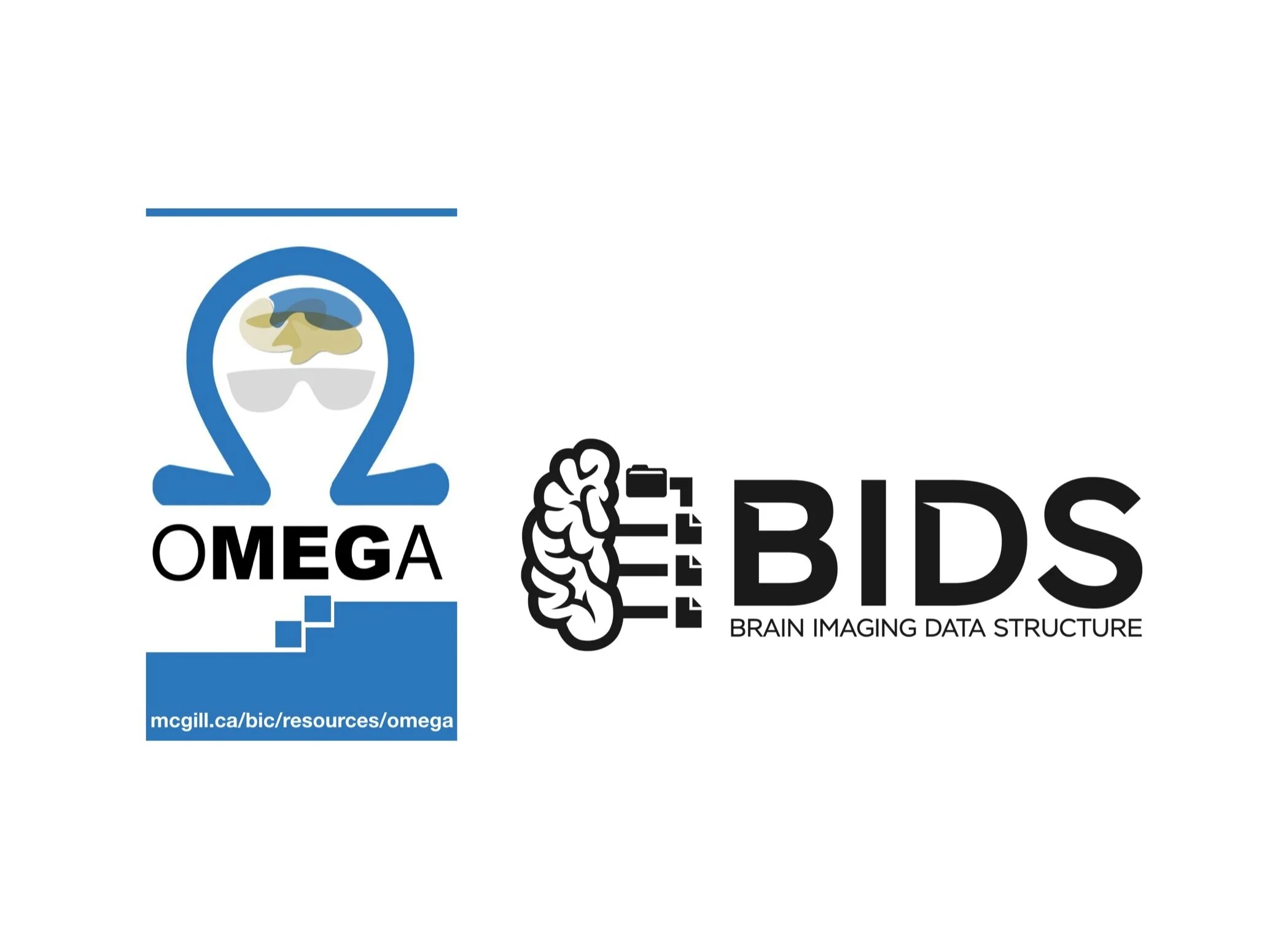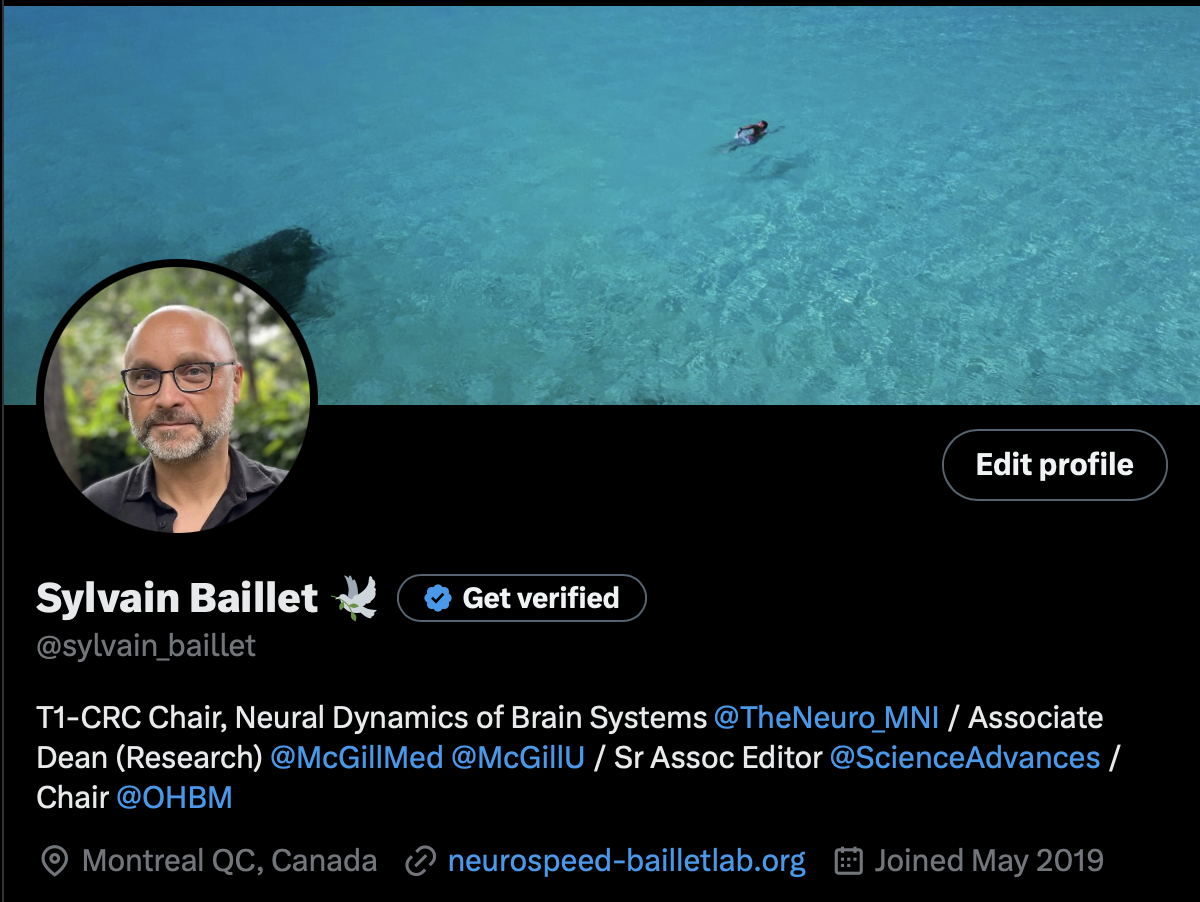
Our pillars.
We nurture a multidisciplinary approach to our research questions, from conceptual foundations to scholarly publications, the delivery of free and open practical software apps & data repositories.
Conceptual foundations
We see the brain as a prediction machine that actively forecasts its inputs, evaluates discrepancies with actual external events, and updates internal contextual representations accordingly, for behavioral adaptation and learning. Mechanistically, we posit that this constant, recurrent flux is implemented by interdependent rhythmic fluctuations in brain networks.
Neural dynamics of brain systems
We embrace the complexity of brain signaling to reveal hidden structures that are common across brain functions and behavior. We obsess over polyrhythmic, local and network interactions, and how they enable the mechanistic workings of the brain as a prediction machine.
Time-resolved imaging & electrophysiology
We use multiscale electrophysiology (from cells to whole-brain imaging with EEG/MEG), often combined with neuromodulation (optogenetics, transcranial stimulation, real-time closed-loop sensory stimulation) to best capture and modify the rapid dynamics of brain networks, to establish causal links with behavior and symptoms.
AI for neuroscience, neuroscience for AI
We train artificial agents with natural stimulus sequences to derive proxies of active inference in brain networks and produce encoding models of neurophysiological activity.
Ultimately, we aim to close that loop and propose new computational models for AI and machine learning, inspired by our current understanding of neurophysiology.
Software apps for everyone
We are co-founders of Brainstorm: a free, open-source software application for multimodal brain imaging & electrophysiology. Brainstorm has tens of thousands of users, who published hundreds of research papers with Brainstorm as the primary tool for data analysis.
We also provide training and support to encourage adoption of good software & practices for research and educational purposes.
Sharing organized data
We co-founded the Open MEG Archives (OMEGA): a large open-access repository of MEG and MRI data (>250 volumes).
We formed an international consortium to drive the extension of the Brain Imaging Data Structure (BIDS) to MEG. MEG-BIDS is a principled solution to store, organize and share large data volumes produced with MEG. This initiative has snowballed to more data types for electrophysiology (EEG and multi-cellular recordings).
Explore further…
Browse our peer-reviewed journal publications (many are open-access; contact us for reprints!).
Access the full collection of our publication records here (incl. talks, conference proceedings & interventions in the media).
We publish in books too!
Follow us on X:
Special features.
In the videos below, we explain some of the recent studies conducted in the lab, and showcase our Brainstorm app for brain research.
Discover our new Nature Neuroscience study on how the proteins involved in Alzheimer's disease are related to modifications in brain activity, several years before the first symptoms start to manifest.
We explain how we used direct brain stimulation to demonstrate the causal role of neural oscillations on working memory functions. This is a companion video to our Neuron (2017) and Science Advances (2022) papers.
Companion video to our paper published in Neuron (2020), where we used a combination of artificial neural networks and brain signals to demonstrate brain predictive phenomena during natural speech perception.
Companion visual explanation to "Coupled oscillations enable rapid temporal recalibration to audiovisual asynchrony" by Lennert, Samiee & Baillet, published by Communications Biology (2021).
Discover the many software features of Brainstorm, a free and open-source app we develop for multimodal brain data analyses.
A video where we explain our approach to developing and sharing free and open-source software resources with everyone in our scientific community.
Sylvain shares some insight about his journey in science: key decisions, opportunities, failures and serendipity along the way!
